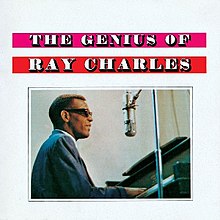
Let's Stay Together is the fourth album by the soul singer Al Green, released in 1972, and is the follow-up to his moderate success Al Green Gets Next to You. It was recorded at Royal Recording Studio, 1320 S. Lauderdale, in Memphis and was a success, peaking at number eight on the pop albums chart and became the first of six albums to peak at number-one on the soul album chart. It is best known for the title track "Let's Stay Together", which became Green's signature song and his only number-one pop hit single. The album was the third produced by Willie Mitchell and marked the beginning of Green's classic period of critically acclaimed albums. Let's Stay Together was reissued in 2003 by The Right Stuff.
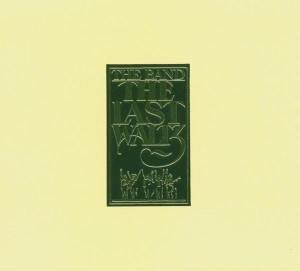
The Last Waltz is the second live album by the Band, released on Warner Bros. Records in 1978, catalogue 3WS 3146. It is the soundtrack to the 1978 film of the same name, and the final album by the original configuration of the Band. It peaked at No. 16 on the Billboard 200.

David "Fathead" Newman was an American jazz and rhythm-and-blues saxophonist, who made numerous recordings as a session musician and leader, but is best known for his work as a sideman on seminal 1950s and early 1960s recordings by Ray Charles.

Unforgettable... with Love, also known as simply Unforgettable, is the thirteenth studio album by American singer Natalie Cole. Released on June 11, 1991, the album includes covers of standards previously performed by her father, Nat King Cole. It was also her debut for Elektra Records, after being given her release from EMI Records.
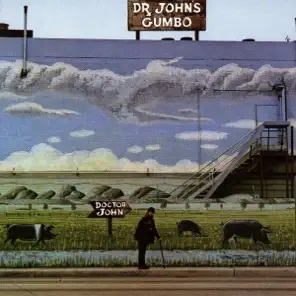
Dr. John's Gumbo released in 1972 is the fifth album by New Orleans singer and pianist Dr. John, a tribute to the music of his native city. The album is a collection of covers of New Orleans classics, played by a major figure in the city's music. It marked the beginning of Dr. John's transition away from the eccentric stage character that earned him a cult following, and toward a more straightforward image based on New Orleans' R&B traditions.

Al Green Explores Your Mind is the eighth album by soul singer Al Green. Unlike previous Al Green albums, this album featured only one major hit, the U.S. #7 hit "Sha-La-La ", but did contain the original version of "Take Me to the River", a song which went to #26 on the Billboard chart when covered by Talking Heads in 1978. In 2004, the song "Take Me to the River" was ranked number 117 on Rolling Stone magazine's list of the 500 greatest songs of all time.

Al Green's Greatest Hits is a 1975 greatest hits release by soul singer Al Green. In 2003, the album was ranked number 52 on Rolling Stone magazine's list of the 500 greatest albums of all time, maintaining the rating in a 2012 revised list. The album's ranking dropped to number 456 in the 2020 revised list. The compilation has consistently ranked as one of the best executed 'greatest hits' albums in history. The album peaked at No. 3 on the Billboard Top Soul LPs chart and No. 17 on the Top LPs chart.

The Blanton–Webster Band is a compilation album that combines the master takes of all the recordings by Duke Ellington's Orchestra during the years of 1940 to 1942, involving bassist Jimmy Blanton and tenor saxophonist Ben Webster. The recordings were originally made for RCA Victor during what many critics regard as the Ellington orchestra's golden period. The three CDs contain many numbers which were to become classics, and the arrangements were frequently inventive and innovative.

Road Time was the first live concert recording of the Toshiko Akiyoshi – Lew Tabackin Big Band. The recording was made at three concerts in Tōkyō and Ōsaka, during a 1976 Japan tour and the double album received a 1977 Grammy nomination in the "Best Jazz Performance - Big Band" category.
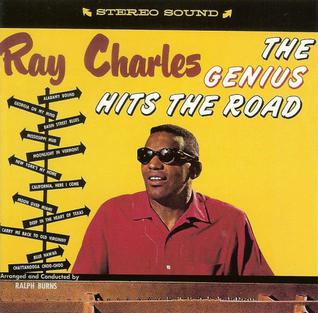
The Genius Hits the Road is a 1960 album by Ray Charles. The concept album focuses on songs written about various parts of the United States. It peaked at number nine on the pop album charts and produced a US #1 single, "Georgia on My Mind".
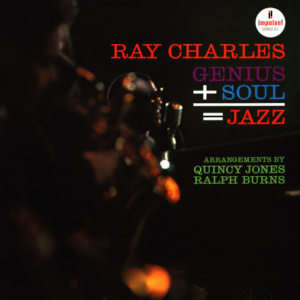
Genius + Soul = Jazz is a 1961 album by American musician Ray Charles, featuring big band arrangements by Quincy Jones and Ralph Burns. Charles is accompanied by two groups drawn from members of The Count Basie Band and from the ranks of top New York session players. It was recorded at Van Gelder Studio in two sessions on December 26 and 27, 1960 and originally released on the Impulse! label as Impulse! A–2.

Soul on Top is the 28th studio album by American musician James Brown. The album was released in April 1970, by King. Brown and saxophonist Maceo Parker worked with arranger/conductor Oliver Nelson to record a big band, funk and jazz vocal album. It was recorded with Louie Bellson and his 18-piece jazz orchestra at United Western Recorders in Hollywood, California in November 1969, and features jazz standards, show tunes, and middle of the road hits, as well as a new arrangement of Brown's funk hit "Papa's Got a Brand New Bag".

Water Babies is a compilation album by American jazz trumpeter Miles Davis. It compiled music Davis recorded in studio sessions with his quintet in 1967 and 1968, including outtakes from his 1968 album Nefertiti and recordings that foreshadowed his direction on In a Silent Way (1969), while covering styles such as jazz fusion and post-bop. Water Babies was released by Columbia Records in 1976 after Davis had (temporarily) retired.
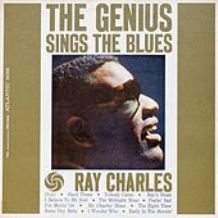
The Genius Sings the Blues is an album by Ray Charles, released in October 1961 on Atlantic Records. The album was his last release for Atlantic, compiling twelve blues songs from various sessions during his tenure for the label. The album showcases Charles's stylistic development with a combination of piano blues, jazz, and southern R&B. The photo for the album cover was taken by renowned photographer Lee Friedlander. The Genius Sings the Blues was reissued in 2003 by Rhino Entertainment with liner notes by Billy Taylor.
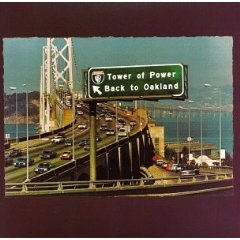
Back to Oakland is the fourth album by Bay Area based band Tower of Power, released in early 1974 on Warner Bros. Records. It was voted by Modern Drummer magazine as one of the most important recordings for drummers to listen to. The cover photography was by Bruce Steinberg at San Francisco–Oakland Bay Bridge, San Francisco, California.

The Genius After Hours is an album by American musician Ray Charles, released in 1961. The songs featured on the album were taken from the same three studio sessions that created his 1957 album The Great Ray Charles, which featured the use of both a trio and a septet; the latter was arranged by Quincy Jones. Also appearing on The Genius After Hours is David "Fathead" Newman on tenor and alto saxophone, alongside trumpeter Joseph Bridgewater.
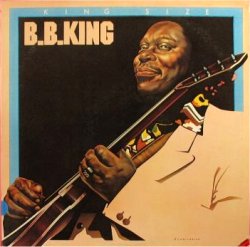
King Size is the twenty-fourth studio album by B. B. King, released in 1977.

Preservation Act 2 is a 1974 concept album by the English rock band the Kinks, and their thirteenth studio album. It sold poorly, and received a mixed response among critics. Ken Emerson, in Rolling Stone, held out the album as an "underrated" one in the Kinks' repertoire.

Catchin' Some Rays: The Music of Ray Charles is the 6th album by jazz singer Roseanna Vitro, released in August 1997 on the Telarc Jazz label.

Let's Be Frank is the fourteenth studio album by American country artist Trisha Yearwood. It was first released through Williams Sonoma stores on December 20, 2018 and was widely released on February 14, 2019 via Gwendolyn Records. The project was produced by Don Was and arranged by Vincent Mendoza. The album pays tribute to Frank Sinatra, whom Yearwood had always admired. It was a record that Yearwood had always wanted to create but never got around to doing so. Let's Be Frank includes covers of songs notably performed by Sinatra and also features one original composition.
